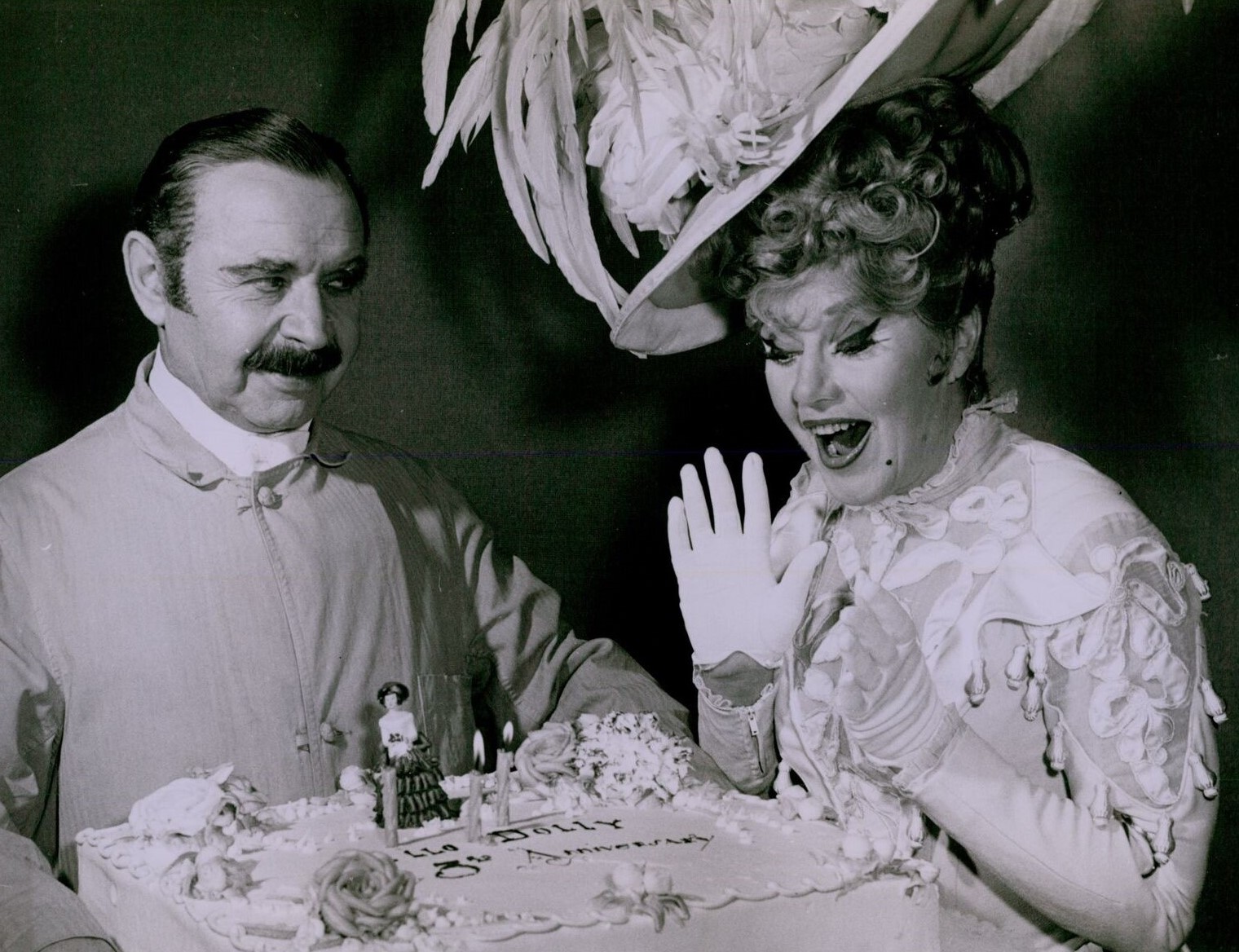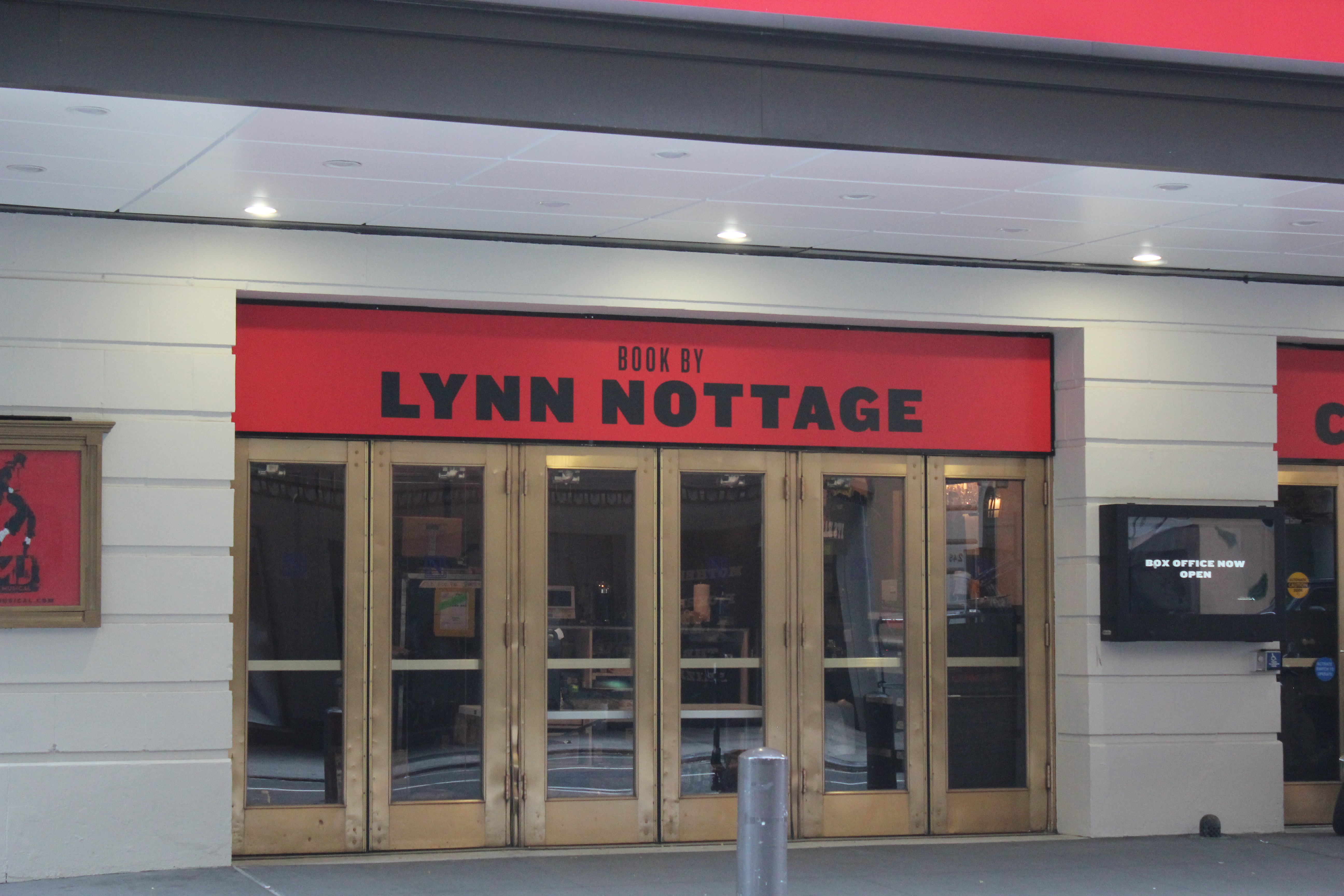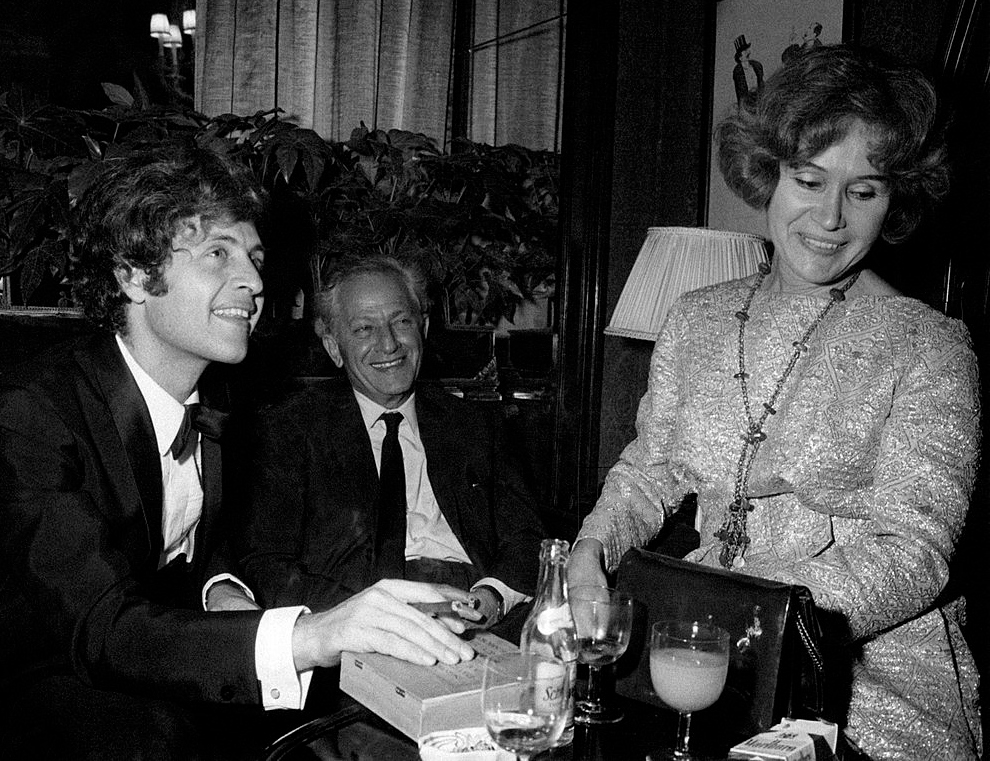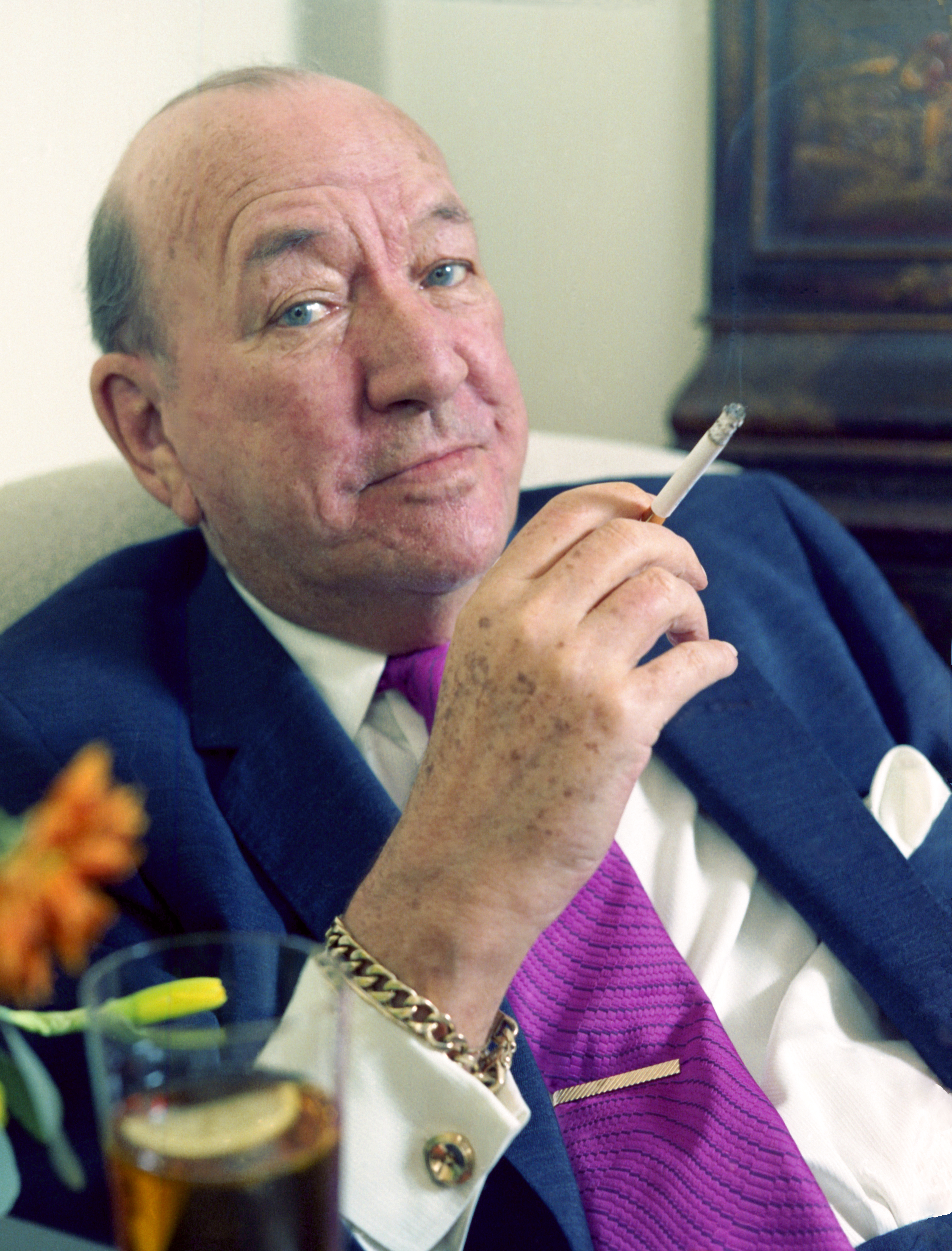|
Two's Company (musical)
''Two's Company'' is a musical revue with principal sketches by Charles Sherman and Peter DeVries, principal lyrics by Ogden Nash and Sammy Cahn, and principal music by Vernon Duke. The evening consisted of a series of show business-themed comedy sketches and song-and-dance routines tailored for the talents of its centerpiece, Bette Davis, who accepted the challenge of an eight-shows-a-week schedule when good film roles failed to follow her triumph in ''All About Eve''. The out-of-town tryout opened at the Shubert Theatre in Detroit on October 19, 1952. In the middle of the third chorus of her first song, an overworked Davis collapsed. Revived by her then-husband Gary Merrill, she walked to the apron of the stage and with a smile commented to the audience, "Well, you can't say I didn't fall for you!," winning over both them and the critics, whose reviews were kind. From there the show moved to Pittsburgh, where it was met with less enthusiasm, and the creative team began reshapi ... [...More Info...] [...Related Items...] OR: [Wikipedia] [Google] [Baidu] |
Vernon Duke
Vernon Duke ( 16 January 1969) was a Russian-born American composer/songwriter who also wrote under his birth name, Vladimir Dukelsky. He is best known for "Taking a Chance on Love," with lyrics by Ted Fetter and John Latouche (1940), "I Can't Get Started," with lyrics by Ira Gershwin (1936), " April in Paris," with lyrics by E. Y. ("Yip") Harburg (1932), and "What Is There To Say," for the ''Ziegfeld Follies'' of 1934, also with Harburg. He wrote the words and music for " Autumn in New York" (1934) for the revue '' Thumbs Up!'' In his book, ''American Popular Song, The Great Innovators 1900-1950'', composer Alec Wilder praises this song, writing, “The verse may be the most ambitious I’ve ever seen." Duke also collaborated with lyricists Johnny Mercer, Ogden Nash, and Sammy Cahn. Early life Vladimir Aleksandrovich Dukelsky (Russian: Владимир Александрович Дукельский) was born in 1903 into a Belarusian noble family in the village of Parfyan ... [...More Info...] [...Related Items...] OR: [Wikipedia] [Google] [Baidu] |
Tallulah Bankhead
Tallulah Brockman Bankhead (January 31, 1902 – December 12, 1968) was an American actress. Primarily an actress of the stage, Bankhead also appeared in several prominent films including an award-winning performance in Alfred Hitchcock's ''Lifeboat'' (1944). She also had a brief but successful career on radio and made appearances on television. In all, Bankhead amassed nearly 300 film, stage, television and radio roles during her career. She was inducted into the American Theater Hall of Fame in 1972 and the Alabama Women's Hall of Fame in 1981. Bankhead was a member of the Bankhead and Brockman family, a prominent Alabama political family. Her grandfather and her uncle were U.S. senators, and her father was Speaker of the House of Representatives. Bankhead's support of liberal causes, including the budding civil rights movement, brought her into public conflict with her family and southern contemporaries, who championed white supremacy and racial segregation. She also supp ... [...More Info...] [...Related Items...] OR: [Wikipedia] [Google] [Baidu] |
Nora Kaye
Nora Kaye-Ross (January 17, 1920 – February 28, 1987) was an American prima-ballerina known for her ability to perform dramatic roles. Called the ''Duse of Dance'' after the acclaimed actress Eleonora Duse, she also worked in films as a choreographer and producer and performed on Broadway. Early life Kaye was born Nora Koreff in New York City, New York, the daughter of Russian Jewish immigrant parents, Louise (1895–1973) and Gregory Joseph Koreff (1893–1976). She later changed her surname to Kaye. Her father, Gregory Koreff was an actor with the Moscow Art Theatre and worked under Konstantin Stanislavski. At the age of five, Kaye began studying dancing under tutelage from Michel Fokine and three years later joined a ballet class at the Metropolitan Opera school where she continued her studies under Margaret Curtis. When Kaye turned 15, she graduated from the Metropolitan Opera into its corps de ballet. Kaye also studied at the School of American Ballet and with such no ... [...More Info...] [...Related Items...] OR: [Wikipedia] [Google] [Baidu] |
David Burns (actor)
David Burns (June 22, 1902 – March 12, 1971) was an American Broadway theatre and motion picture actor and singer. Life and career Burns was born on Mott Street in Chinatown, Manhattan. He made his Broadway debut in 1923 in '' Polly Preferred '' and went to London with the show in 1924. His first musical was '' Face the Music'' in 1932, and Cole Porter's ''Nymph Errant'' (1933) was his London debut. He appeared in many comedies and musicals over an almost 50-year career."David Burns Broadway" ''Playbill''. Retrieved October 12, 2017. He won two s for [...More Info...] [...Related Items...] OR: [Wikipedia] [Google] [Baidu] |
Neil Simon Theatre
The Neil Simon Theatre, originally the Alvin Theatre, is a Broadway theater at 250 West 52nd Street in the Theater District of Midtown Manhattan in New York City. Opened in 1927, the theater was designed by Herbert J. Krapp and was built for Alex A. Aarons and Vinton Freedley. The original name was an amalgamation of Aarons's and Freedley's first names; the theater was renamed for playwright Neil Simon in 1983. The Neil Simon has 1,467 seats across two levels and is operated by the Nederlander Organization. Both the facade and the auditorium interior are New York City landmarks. The facade is divided into two sections: the six-story stage house to the west and the five-story auditorium to the east. The ground floor is clad with terracotta blocks and contains an entrance with a marquee. The upper stories of both sections are made of brick and terracotta; the auditorium facade has arched windows, niches, and a central pediment, while the stage house has a more plain design. Th ... [...More Info...] [...Related Items...] OR: [Wikipedia] [Google] [Baidu] |
Jerome Robbins
Jerome Robbins (born Jerome Wilson Rabinowitz; October 11, 1918 – July 29, 1998) was an American dancer, choreographer, film director, theatre director and producer who worked in classical ballet, on stage, film, and television. Among his numerous stage productions were '' On the Town'', ''Peter Pan'', ''High Button Shoes'', ''The King and I'', ''The Pajama Game'', '' Bells Are Ringing'', ''West Side Story'', ''Gypsy'', and '' Fiddler on the Roof''. Robbins was a five-time Tony Award-winner and a recipient of the Kennedy Center Honors. He received two Academy Awards, including the 1961 Academy Award for Best Director with Robert Wise for ''West Side Story'' and a special Academy Honorary Award for his choreographic achievements on film. A documentary about Robbins's life and work, ''Something to Dance About'', featuring excerpts from his journals, archival performance and rehearsal footage, and interviews with Robbins and his colleagues, premiered on PBS in 2009 and won both ... [...More Info...] [...Related Items...] OR: [Wikipedia] [Google] [Baidu] |
Choreographed
Choreography is the art or practice of designing sequences of movements of physical bodies (or their depictions) in which motion or form or both are specified. ''Choreography'' may also refer to the design itself. A choreographer is one who creates choreographies by practising the art of choreography, a process known as choreographing. It most commonly refers to dance choreography. In dance, ''choreography'' may also refer to the design itself, which is sometimes expressed by means of dance notation. Dance choreography is sometimes called ''dance composition''. Aspects of dance choreography include the compositional use of organic unity, rhythmic or non-rhythmic articulation, theme and variation, and repetition. The choreographic process may employ improvisation for the purpose of developing innovative movement ideas. In general, choreography is used to design dances that are intended to be performed as concert dance. The art of choreography involves the specification of human ... [...More Info...] [...Related Items...] OR: [Wikipedia] [Google] [Baidu] |
Jules Dassin
Julius "Jules" Dassin (December 18, 1911 – March 31, 2008) was an American film and theatre director, producer, writer and actor. A subject of the Hollywood blacklist in the McCarthy era, he subsequently moved to France, and later Greece, where he continued his career. He was a member of the Academy of Motion Picture Arts and Sciences and the Screen Directors' Guild. Dassin received a Best Director Award at the Cannes Film Festival for his film ''Du rififi chez les hommes''. He was later nominated for an Academy Award for Best Director and Best Writing, Story and Screenplay – Written Directly for the Screen for his film ''Never on Sunday'', and was nominated for a Tony Award for Best Direction of a Musical for his Broadway production of ''Illya Darling''. Biography Early life Julius Dassin was born on December 18, 1911, to Bertha Dassin (née Vogel) and Samuel Dassin, a barber, in Middletown, Connecticut. His parents were both Jewish immigrants from Odessa, Russian empi ... [...More Info...] [...Related Items...] OR: [Wikipedia] [Google] [Baidu] |
Arthur Miller
Arthur Asher Miller (October 17, 1915 – February 10, 2005) was an American playwright, essayist and screenwriter in the 20th-century American theater. Among his most popular plays are '' All My Sons'' (1947), ''Death of a Salesman'' (1949), ''The Crucible'' (1953), and '' A View from the Bridge'' (1955). He wrote several screenplays and was most noted for his work on '' The Misfits'' (1961). The drama ''Death of a Salesman'' is considered one of the best American plays of the 20th century. Miller was often in the public eye, particularly during the late 1940s, '50s and early '60s. During this time, he received a Pulitzer Prize for Drama, testified before the House Un-American Activities Committee, and married Marilyn Monroe. In 1980, he received the St. Louis Literary Award from the Saint Louis University Library Associates. He received the Praemium Imperiale prize in 2001, the Prince of Asturias Award in 2002, and the Jerusalem Prize in 2003, and the Dorothy and ... [...More Info...] [...Related Items...] OR: [Wikipedia] [Google] [Baidu] |
Noël Coward
Sir Noël Peirce Coward (16 December 189926 March 1973) was an English playwright, composer, director, actor, and singer, known for his wit, flamboyance, and what ''Time'' magazine called "a sense of personal style, a combination of cheek and chic, pose and poise"."Noel Coward at 70" ''Time'', 26 December 1969, p. 46 Coward attended a dance academy in London as a child, making his professional stage début at the age of eleven. As a teenager he was introduced into the high society in which most of his plays would be set. Coward achieved enduring success as a playwright, publishing more than 50 plays from his teens onwards. Many of his works, such as '' |
Parody
A parody, also known as a spoof, a satire, a send-up, a take-off, a lampoon, a play on (something), or a caricature, is a creative work designed to imitate, comment on, and/or mock its subject by means of satiric or ironic imitation. Often its subject is an original work or some aspect of it (theme/content, author, style, etc), but a parody can also be about a real-life person (e.g. a politician), event, or movement (e.g. the French Revolution or 1960s counterculture). Literary scholar Professor Simon Dentith defines parody as "any cultural practice which provides a relatively polemical allusive imitation of another cultural production or practice". The literary theorist Linda Hutcheon said "parody ... is imitation, not always at the expense of the parodied text." Parody may be found in art or culture, including literature, music, theater, television and film, animation, and gaming. Some parody is practiced in theater. The writer and critic John Gross observes in his ''Oxford Boo ... [...More Info...] [...Related Items...] OR: [Wikipedia] [Google] [Baidu] |
Television
Television, sometimes shortened to TV, is a telecommunication medium for transmitting moving images and sound. The term can refer to a television set, or the medium of television transmission. Television is a mass medium for advertising, entertainment, news, and sports. Television became available in crude experimental forms in the late 1920s, but only after several years of further development was the new technology marketed to consumers. After World War II, an improved form of black-and-white television broadcasting became popular in the United Kingdom and the United States, and television sets became commonplace in homes, businesses, and institutions. During the 1950s, television was the primary medium for influencing public opinion.Diggs-Brown, Barbara (2011''Strategic Public Relations: Audience Focused Practice''p. 48 In the mid-1960s, color broadcasting was introduced in the U.S. and most other developed countries. The availability of various types of archival st ... [...More Info...] [...Related Items...] OR: [Wikipedia] [Google] [Baidu] |
.jpg)








